The lands of Belarus during the Middle Ages became part of Kievan Rus' and were split between different regional principalities, including Polotsk, Turov, Vitebsk, and others. Following the Mongol invasions of the 13th century, these lands were absorbed by the Grand Duchy of Lithuania, which later was merged into the Polish–Lithuanian Commonwealth in the 16th century.
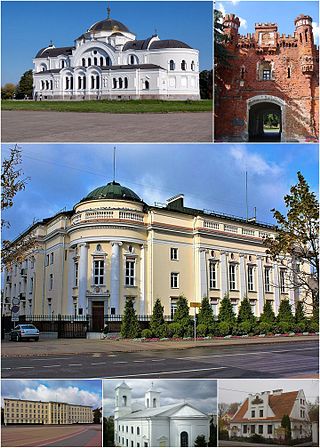
Brest, formerly Brest-Litovsk and Brest-on-the-Bug, Berestia, is a city in Belarus at the border with Poland opposite the Polish town of Terespol, where the Bug and Mukhavets rivers meet, making it a border town. It serves as the administrative center of Brest Region and Brest District, though it is administratively separated from the district. As of 2024, it has a population of 344,470.

The Byelorussian Soviet Socialist Republic, also known as Soviet Byelorussia or simply Byelorussia, was a republic of the Soviet Union (USSR). It existed between 1920 and 1922 as an independent state, and afterwards as one of fifteen constituent republics of the USSR from 1922 to 1991, with its own legislation from 1990 to 1991. The republic was ruled by the Communist Party of Byelorussia. It was also known as the White Russian Soviet Socialist Republic.

The Belarusian People's Republic, also known as the Belarusian Democratic Republic, was a state proclaimed by the Council of the Belarusian Democratic Republic in its Second Constituent Charter on 9 March 1918 during World War I. The Council proclaimed the Belarusian Democratic Republic independent in its Third Constituent Charter on 25 March 1918 during the occupation of contemporary Belarus by the Imperial German Army.

Radasłaŭ Kazimiravič Astroŭski was a Belarusian collaborator with Nazi Germany who served as president of the Belarusian Central Council, a puppet Belarusian administration under German hegemony from 1943–1944, and in exile from 1948-1976.
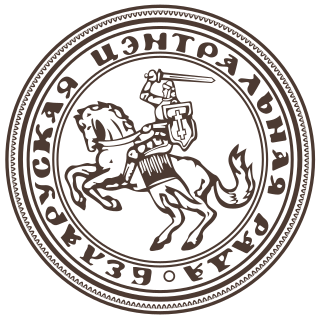
The Belarusian Central Council was a puppet administrative body in German-occupied Belarus during World War II. It was established by Nazi Germany within Reichskommissariat Ostland in 1943–44, following requests by collaborationist Belarusian politicians hoping to create a Belarusian state with German support.

Western Belorussia or Western Belarus is a historical region of modern-day Belarus which belonged to the Second Polish Republic during the interwar period. For twenty years before the 1939 invasion of Poland, it was the northern part of the Polish Kresy macroregion. Following the end of World War II in Europe, most of Western Belorussia was ceded to the Soviet Union by the Allies, while some of it, including Białystok, was given to the Polish People's Republic. Until the dissolution of the Soviet Union in 1991, Western Belorussia formed the western part of the Byelorussian Soviet Socialist Republic (BSSR). Today, it constitutes the west of modern Belarus.

The Belarusian resistance during World War II opposed Nazi Germany from 1941 until 1944. Belarus was one of the Soviet republics occupied during Operation Barbarossa. The term Belarusian partisans may refer to Soviet-formed irregular military groups fighting Germany, but has also been used to refer to the disparate independent groups who also fought as guerrillas at the time, including Jewish groups, Polish groups, and nationalist Belarusian forces opposed to Germany.

When the Second World War in Europe began, the territory which now forms the country of Belarus was divided between the Soviet Union and the Second Polish Republic. The borders of Soviet Belarus were greatly expanded in the Soviet invasion of Poland of 1939. In 1941, the country was occupied by Nazi Germany. Following the German military disasters at Stalingrad and Kursk, the collaborationist Belarusian Central Council (BCC) was formed by the Germans in order to raise local support for their anti-Soviet operations. The BCC in turn formed the twenty-thousand strong Belarusian Home Defence (BKA), active from 23 February 1944 to 28 April 1945. Assistance to collaborators was offered by the local Soviet administrative governments, and prewar public organizations including the former Soviet Belarusian Youth. The country was soon retaken by the Red Army in 1944. Devastated by the war, Belarus lost significant populations and economic resources. Many battles occurred in Belarusian territory. Belarusians also participated in the advance towards Berlin.

Smarhon or Smorgon is a town in Grodno Region, Belarus. It serves as the administrative center of Smarhon District. It was the site of Smarhon air base, now mostly abandoned. Smarhon is located 107 kilometres (66 mi) from the capital, Minsk. As of 2024, it has a population of 35,422.

The Slutsk uprising or the Slutsk defence was an unsuccessful armed attempt to establish an independent Belarus. It took place in late 1920, near the end of the Polish-Soviet War, in the region of the town of Slutsk. It involved a series of clashes between irregular Belarusian forces loyal to the Belarusian People's Republic and the Soviet Red Army, ending in a Soviet victory.

The 30th Waffen Grenadier Division of the SS(1st Belarusian), originally called the 30th Waffen Grenadier Division of the SS , was a short-lived German Waffen-SS infantry division formed largely from Belarusian, Russian, Polish, and Ukrainian personnel of the Schutzmannschaft-Brigade Siegling in August 1944 at Warsaw in the General Government.
Belarusian resistance movement are the resistance movements on the territory of contemporary Belarus. Wars in the area - Great Northern War and the War of the Polish Succession - damaged its economy further. In addition, Russian armies raided the Polish–Lithuanian Commonwealth under the pretext of the returning of fugitive peasants. By mid-18th century their presence in the lands of modern Belarus became almost permanent.

Frantsishak Alyakhnovich was a Belarusian writer, journalist descended from the Ruthenian nobility.
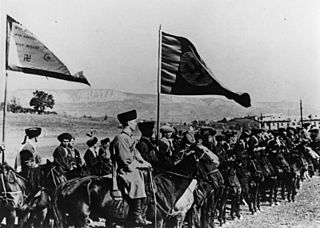
A large number of Soviet citizens of various ethnicities collaborated with Nazi Germany during World War II. It is estimated that the number of Soviet collaborators with the Nazi German military was around 1 million.

During World War II, some Belarusians collaborated with the invading Axis powers. Until the beginning of Operation Barbarossa in 1941, the territory of Belarus was under control of the Soviet Union, as the Byelorussian Soviet Socialist Republic. However, memories of Soviet repressions in Belarus and collectivization, as well as of the polonization and discrimination against Belarusians under the Second Polish Republic were still fresh.
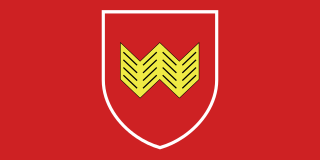
Valozhyn District or Valožyn District is district (raion) of Minsk Region in Belarus. Its administrative center is Valozhyn. As of 2024, it has a population of 33,499.
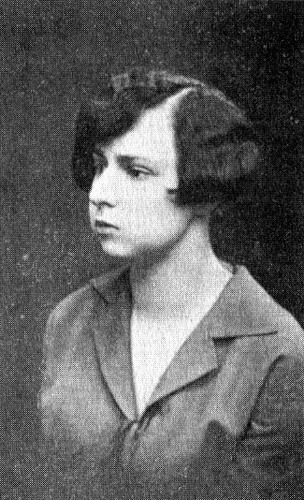
Natallia Alyakseyewna Arsiennieva was a Belarusian playwright, poet and translator who authored the lyrics to the hymn "Mahutny Boža". She was married to Francišak Kušal.

The Rada of the Belarusian National Republic was the governing body of the Belarusian Democratic Republic. Since 1919, the Rada BNR has been in exile where it has preserved its existence among the Belarusian diaspora as an advocacy group promoting support to Belarusian independence and democracy in Belarus among Western policymakers. As of 2024, the Rada BNR is the oldest existing government in exile.

Belarusian nationalism refers to the belief that Belarusians should constitute an independent nation. Belarusian nationalism began emerging in the mid-19th century, during the January Uprising against the Russian Empire. Belarus first declared independence in 1917 as the Belarusian Democratic Republic, but was subsequently invaded and annexed by the Russian Soviet Federative Socialist Republic in 1918, becoming part of the Soviet Union. Belarusian nationalists both collaborated with and fought against Nazi Germany during World War II, and protested for the independence of Belarus during the late 1980s and early 1990s.















